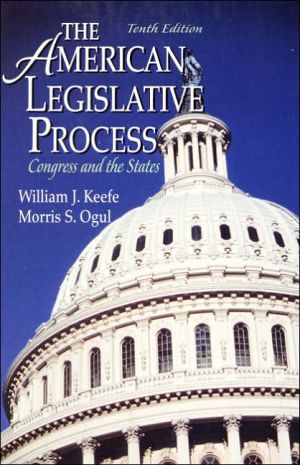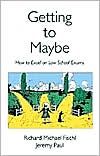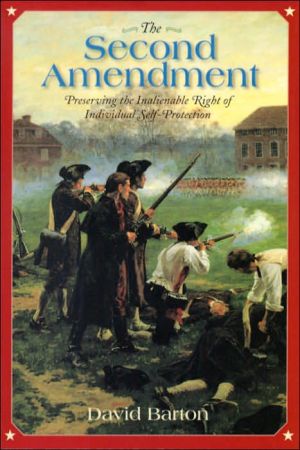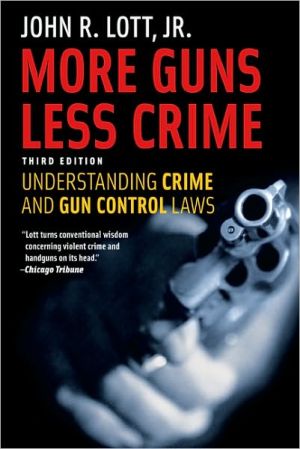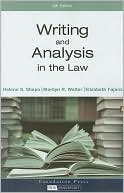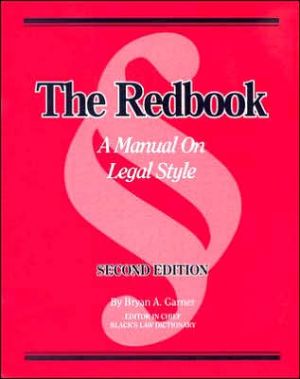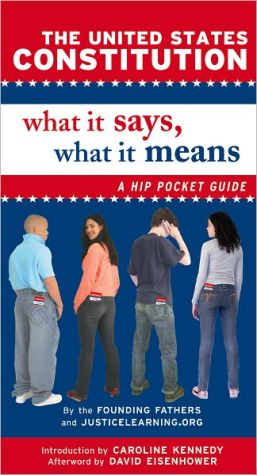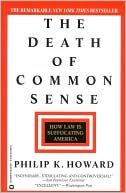The American Legislative Process: Congress and the States
As the legislative decides which policy proposals will be deliberated and turned into law, it determines the scope and direction of all public programs. At the same time it remains a mirror image of the range and reality of American politics, to be viewed within the context of external forces such as political parties, chief executives, and courts. The American Legislative Process: Congress and the States is an exhaustive portrayal and analysis of the critical branch of American government at...
Search in google:
/8770C-5, 0-13-087703-4, Keefe, William J., Ogul, Morris S., The American Legislative Process: Congress and the States, 10/E//—>This book describes and analyzes the American legislative process using a wide variety of perspectives and sources to encompass legal, behavioral, normative, and historical dimensions. Its current content reflects evolving legislatures and the latest literature on the legislative process.Chapter topics include financing congressional elections, pork barrel politics in Congress, initiative and referendum, term limits, impeachment, redistricting and the courts, recruitment of legislative candidates, PACs, committee politics, committee floor relations, rules, legislative strategy, party caucuses, party voting, independent counsels, presidential leadership in Congress, congressional accountability, reapportionment, incumbency, congressional norms, house speakership, seniority, majority-minority districts, interest group influence, party impact on policy making, legislative-judicial relations, and legislative ethics.For anyone interested in the United States Congress, the legislative process, and American political institutions. Booknews Revised edition of a portrayal and analysis of the legislative process at both the federal and state levels. The 14 chapters discuss legislatures and legislators in the political system; the legislative structure for decision making; legislatures, parties, and interests; interaction with the executive and the courts; and conclusions. Topics added or expanded upon in this edition include congressional rules changes and reorganization, the House speakership, and the leverage of special interest groups. Analysis in each chapter moves between federal and state entities and illustrates how legislative institutions and practices are shaped to reflect the interests and preferences of the legislators themselves. Annotation c. Book News, Inc., Portland, OR (booknews.com)
PREFACE\ The American legislature is the first branch of government. It is the legislature that decides which policy proposals will be considered, shaped, and turned into public law. New policy ventures require legislative approval; earlier political settlements rest on legislative forbearance. The ultimate responsibility for the direction and scope of public programs thus rests with the legislature. But the legislature is a remarkably open and accessible institation, and hence its decisions are often influenced by the preferences of outside interests and actors, including the chief executive.\ The centrality of legislatures in the American system of government is a function of their prominent constitutional position, especially in the case of Congress. Legislatures, of course, are much more than the sum of their constitutional powers. They are places where individual political careers develop and expand and where political maneuvering is a way of life. Supported by their staffs and others, members invest unusual amounts of time and energy in protecting and enhancing their careers, and the legislature is singularly hospitable to their needs—for advertising their wares, gaining recognition and position, and heightening their advantages in the electoral process. The truth of the matter is that, for the typical member, nothing looms more important than his or her career. Failure to protect it, using the resources of the legislature, is more likely to stem from a lack of imagination than from a lack of opportunity.\ More than any other institution of government, the legislature reflects the range and reality of American politics—in the behavior of thepoliticians who do business there, in the conflicts that are resolved there, and in the struggles that occur there to gain the benefits that government can confer or to avoid the penalties that it can impose. The legislature is a microcosm of all democratic politics. Inevitably, it holds a fascination for attentive observers and other democrats.\ American legislatures warrant careful examination for a reason that goes well beyond the fascination of observers. They are changing institutions: their popularity fluctuates; media attention to them vacillates; events help to shape them; election outcomes influence them; strong leaders bend them; new members may alter their character. Legislatures also change by themselves—sometimes self-consciously and independently, sometimes in response to pressures from the outside, sometimes simply to serve symbolic purposes.\ The American legislatures of the 2000s are by no means the same as those of earlier decades. Nor is what we know about them quite the same. The need to examine the evolving legislatures and to take account of the new literature on the legislative process provides the main justification for the preparation of this tenth edition.\ At this point, scholars have developed no encompassing scheme for analyzing the legislative process useful enough to justify its exclusive adoption. In this respect, political scientists who engage in research in this field work under the same burdens shared by political scientists in all fields. Within this limitation, this book proposes to describe and analyze the American legislative process. We have sought to wring the most that we can from a variety of approaches and have drawn upon a wide-ranging assortment of studies—of legal, behavioral, normative, and historical dimensions. The only test invoked has been of their apparent appropriateness to a better understanding of the behavior of legislators and the functioning of legislatures.\ The three major assumptions made in this work are central to effective analysis. First, we believe that legislative institutions should be viewed in relationship to larger environments and inclusive political systems. Accordingly, we have given the role of "outsiders"—political parties, interest groups, chief executives, and courts—at least as much attention as the legislative institution itself. Second, we believe that a comprehensive study of the legislative process requires careful examination of state legislatures as well as Congress. In each chapter, analysis moves between state and nation, depending on the nature of the inquiry and the availability of data or interpretation. Third, we believe that legislative institutions and processes can be illuminated by stressing such aspects of legislative life as the roles, norms, and perceptions held by the legislators.\ Some account of the authors' perspectives may be of interest. Most important, we have tried to keep this volume from becoming disabled as a result of carrying a heavy load of our personal preferences and the incantations that they would tend to produce. Here and there a determined reader may encounter clues that suggest that the authors: (1) hold a bias in favor of legislative institutions that are responsive to majority opinions and impulses in the institution and the electorate; (2) believe that American legislatures today are to be neither extolled nor disparaged in the abstract and that specific analysis should precede assessment; and (3) conclude that there is nothing inevitable about the present ordering of American legislatures, even though major change probably will be associated with major alterations in the broader political system. Given this primary assumption, our analysis inevitably moves toward ascertaining the relevance of contemporary trends in American society for the legislative process.\ American legislatures are not static institutions. Many changes have taken place in recent years, and this tenth edition examines these changes carefully. Among the topics that receive new or expanded analysis are the following: financing of congressional elections, popular evaluations of Congress, impeachment, initiative and referendum, term limits, gerrymandering, redistricting and the courts, recruitment of legislative candidates, PACs, representation, committee politics, committee-floor relations, rules, legislative strategy, party caucuses, party voting, divided government, independent counsels, and presidential leadership in Congress.\ Humor is an important feature of legislative life. In legislatures, as elsewhere, humor diminishes tedium and tension. We have let it slide into our pages here and there—in accounts, for example, involving crab racing, Shamu, the Apache Belles, the cat versus bird controversy in Illinois, the albino deer of Pennsylvania, the real estate business of U.S. Steel, the front porch ruminations of Ethel and Homer concerning discharge resolutions in West Virginia, and legislative oversight in Kentucky ("If you grab them by their budgets, their hearts and minds will follow.") The justification for tapping into the amusing world of legislators is, of course, to extract elements for the development of middle-range theories of the legislative process.\ A number of colleagues, friends, and students assisted us in the preparation of earlier editions: Stan Berard, Lisa Campoli, Holbert N. Carroll, Edward F. Cooke, Joseph Cooper, Martha Ellis Crone, David Fitz, Ayeola Fortune, Paul Goren, Brooke Harlowe, Charles S. Hyneman, Charles O. Jones, Kathryn Keefe, David C. Kozak, Karl T. Kurtz, Thomas Mann, Albert J. Ossman, Albert Papa, Lynette Perkins, Philip Powlick, James A. Robinson, Fiona Ross, Myron Rubinoff, Deborah L. Solomon, and Sidney Wise. In the preparation of this edition, we received valuable assistance from Holbert N. Carroll, William Lies, James Tinnick, Janie Pegher Ondo, and from reviewers Paul Goren, Southern Illinois University; Jack Riley, Coastal Carolina University; and David Nice, Washington State University. Martha Keefe typed much of this edition; our daughter Jodi proofread most of the chapters. We want to thank Beth Gillett and Serena Hoffman of Prentice Hall for their assistance in the preparation of this volume.\ Finally, a word is appropriate about the division of labor in writing this book. Chapters 1 through 10 and Chapter 14 were written by Keefe, and Chapters 11 through 13 were written by Ogul. Each author made numerous contributions to the other's work to develop an integrated book—consistent in approach, content, and style.\ William J. Keefe\ Morris S. Ogul
PrefacePt. 1Legislatures and Legislators in the Political SystemCh. 1The Legislative Task1Ch. 2Legislative Structures and Powers46Ch. 3Representation and Apportionment66Ch. 4Legislators and the Electoral Process97Ch. 5The Legislators137Pt. 2The Legislative Structure for Decision MakingCh. 6The Committee System169Ch. 7Committees at Work208Ch. 8Debate and Decision Making on the Floor233Pt. 3Legislatures, Parties, and InterestsCh. 9Political Parties and the Legislative Process265Ch. 10Interest Groups and the Legislative Process312Pt. 4Interaction With the Executive and the CourtsCh. 11The Chief Executive as Legislator356Ch. 12Legislative Oversight of Bureaucracy390Ch. 13Legislative-Judicial Relations419Pt. 5ConclusionCh. 14The Legislative Process: Problems and Perspectives446Index478
\ BooknewsRevised edition of a portrayal and analysis of the legislative process at both the federal and state levels. The 14 chapters discuss legislatures and legislators in the political system; the legislative structure for decision making; legislatures, parties, and interests; interaction with the executive and the courts; and conclusions. Topics added or expanded upon in this edition include congressional rules changes and reorganization, the House speakership, and the leverage of special interest groups. Analysis in each chapter moves between federal and state entities and illustrates how legislative institutions and practices are shaped to reflect the interests and preferences of the legislators themselves. Annotation c. Book News, Inc., Portland, OR (booknews.com)\ \
